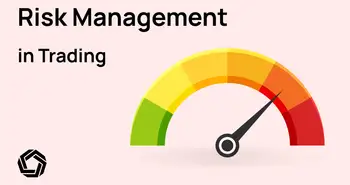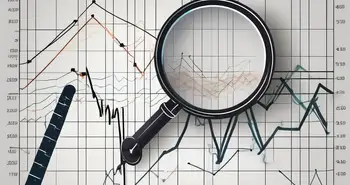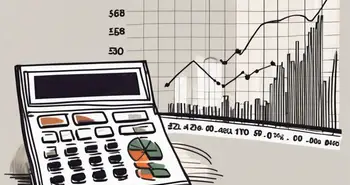Implementing the Risk/Reward (RR) Ratio in Crypto Trading Strategies
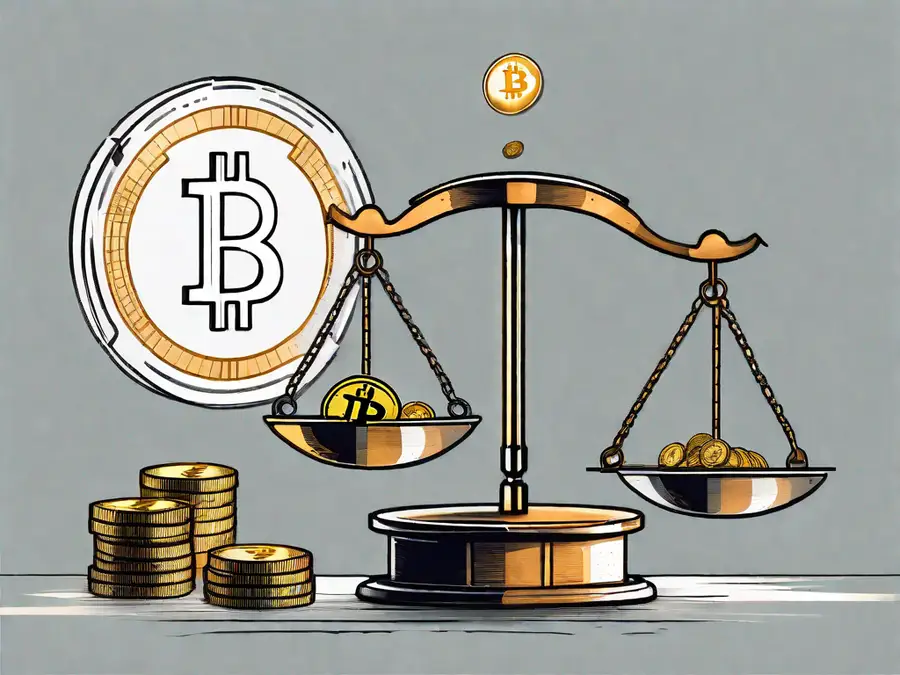
Crypto trading can be an exciting and potentially profitable endeavor. However, it's important to remember that every trade involves inherent risks. To minimize these risks and maximize your chances of success, it's crucial to implement effective risk management strategies. One such strategy that crypto traders often rely on is the Risk/Reward (RR) ratio. In this article, I will guide you through understanding, calculating, and incorporating the RR ratio into your crypto trading strategy.
Understanding the Risk/Reward Ratio
The Risk/Reward ratio is a measurement used to assess the potential risks and rewards of a trade. It helps traders evaluate whether a trade is worth the potential losses. By analyzing this ratio, you can make informed decisions that align with your risk tolerance and trading goals. Let's delve deeper into the definition and importance of the RR ratio.
Definition of Risk/Reward Ratio
The Risk/Reward ratio is simply a comparison between the amount of capital you stand to lose (risk) and the potential gains you can achieve (reward) from a trade. This ratio is expressed as a mathematical equation: RR = potential reward / potential risk. A high RR ratio indicates that the potential reward outweighs the potential risk, making the trade more attractive.
When considering the risk aspect of the ratio, it's important to assess the probability of the trade going against you. This can be influenced by various factors such as market conditions, economic indicators, and technical analysis. By thoroughly analyzing these factors, you can estimate the potential risk involved in a trade.
On the other hand, the reward aspect of the ratio is determined by the profit potential of the trade. This can be influenced by factors such as market volatility, price trends, and fundamental analysis. By carefully evaluating these factors, you can estimate the potential gains that can be achieved from a trade.
It's worth noting that the Risk/Reward ratio is not a guarantee of success. It is merely a tool that helps you assess the potential risks and rewards of a trade. It provides a framework for making informed decisions, but ultimately, the outcome of a trade depends on various factors and market conditions.
Ready to explore your risk tolerance and kickstart your trading journey? With Morpher, you have the opportunity to trade with leverage up to X10! Whether you're a seasoned trader or just starting out, Morpher allows you to test your skills and take your first steps towards success with as little as $1. Sign up now to Morpher and enyoj your starting bonus today!
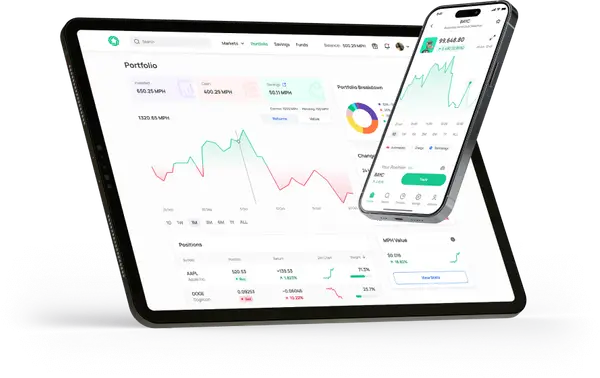
Importance of Risk/Reward Ratio in Trading
The RR ratio is essential because it helps traders make rational decisions based on potential outcomes. It allows you to objectively assess whether a trade offers a favorable risk-to-reward ratio, which is crucial for long-term profitability. By prioritizing trades with a favorable RR ratio, you can effectively manage your risk exposure and increase the odds of profitable trades.
One of the key benefits of considering the Risk/Reward ratio is that it helps you maintain discipline in your trading approach. By focusing on trades with a high RR ratio, you avoid impulsive and emotionally-driven decisions that can lead to losses. Instead, you develop a systematic approach that is based on logical analysis and risk management.
Furthermore, the RR ratio helps you set realistic profit targets and stop-loss levels. By calculating the potential reward and risk of a trade, you can determine the appropriate levels at which to exit the trade. This allows you to protect your capital and lock in profits when the trade moves in your favor.
Another advantage of incorporating the RR ratio in your trading strategy is that it helps you evaluate the overall risk exposure of your portfolio. By considering the RR ratio of each trade, you can ensure that your portfolio is well-diversified and not overly exposed to high-risk trades. This helps you maintain a balanced approach and reduces the likelihood of significant losses.
In conclusion, the Risk/Reward ratio is a valuable tool in trading that allows you to assess the potential risks and rewards of a trade. By considering this ratio, you can make informed decisions that align with your risk tolerance and trading goals. It helps you maintain discipline, set realistic profit targets, and manage your overall risk exposure. Incorporating the RR ratio in your trading strategy can significantly improve your chances of long-term profitability.
The Role of Risk/Reward Ratio in Crypto Trading
In the volatile world of crypto trading, understanding and applying the RR ratio is paramount. Let's unpack its role in assessing market volatility and managing investment risks:
Assessing Market Volatility
Cryptocurrencies are known for their price volatility, which presents both opportunities and risks. The RR ratio, or risk/reward ratio, is a crucial tool in evaluating potential trades and gauging the potential impact of market volatility on your investments. By considering the RR ratio, you can identify trades with an optimal balance of potential gains and acceptable risk levels.
When assessing market volatility, it's important to consider factors such as historical price movements, market trends, and news events that may impact the cryptocurrency market. By analyzing these factors and incorporating them into your evaluation of the RR ratio, you can make more informed trading decisions.
For example, let's say you are considering investing in a particular cryptocurrency. By calculating the RR ratio, you can determine the potential reward, such as the expected profit or price appreciation, and compare it to the potential risk, such as the potential loss or downside risk. This analysis allows you to assess whether the potential reward justifies the potential risk, given the current market conditions.
Managing Investment Risks
Risks are an inherent part of any investment. However, being mindful of the RR ratio allows you to manage these risks more effectively. By setting appropriate stop-loss levels based on your RR ratio, you can limit potential losses while giving your trades room to grow.
Stop-loss orders are a risk management tool that automatically triggers a sell order if the price of a cryptocurrency reaches a certain predetermined level. By setting a stop-loss level based on your RR ratio, you can protect your capital and limit potential losses if the trade doesn't go as expected.
Furthermore, the RR ratio can help you determine the appropriate position size for each trade. By considering the potential reward and risk, you can allocate your capital in a way that optimizes your risk/reward profile. This approach ensures that you are not overexposed to any single trade and helps to diversify your investment portfolio.
Additionally, the RR ratio can be used in conjunction with other risk management techniques, such as portfolio rebalancing and diversification. By regularly reassessing your RR ratio and adjusting your trades accordingly, you can adapt to changing market conditions and mitigate potential risks.
In conclusion, understanding and applying the RR ratio is essential in crypto trading. It allows you to assess market volatility, identify trades with an optimal balance of potential gains and acceptable risk levels, and manage investment risks effectively. By incorporating the RR ratio into your trading strategy, you can protect your capital, sustain long-term profitability, and navigate the dynamic world of cryptocurrency trading with confidence.
Calculating the Risk/Reward Ratio
Understanding the risk/reward ratio is essential for successful trading. It allows traders to assess the potential gains and losses of a trade before entering it. By calculating this ratio, traders can make informed decisions and manage their risk effectively.
Now, let's dive into the steps required to calculate the risk/reward ratio:
Identifying Potential Risk
Before entering a trade, it's crucial to determine your potential risk. This involves assessing the price levels at which you would exit the trade if the market moves against you. By setting stop-loss levels, you define the maximum amount you are willing to lose on a particular trade.
When identifying potential risk, it's important to consider various factors such as market volatility, support and resistance levels, and recent price movements. By analyzing these factors, you can determine a suitable stop-loss level that aligns with your risk tolerance and trading strategy.
For example, if you are trading a stock and it has a strong support level at $50, you might set your stop-loss level slightly below that, at $49.50. This way, if the stock price drops below $49.50, you will exit the trade to limit your potential losses.
Estimating Potential Reward
To calculate the risk/reward ratio, you also need to estimate the potential reward of a trade. This involves identifying realistic profit targets based on technical analysis, market trends, and other relevant factors. By setting clear profit objectives, you can objectively evaluate the risk/reward ratio and make informed trading decisions.
When estimating potential reward, traders often look for key price levels, such as resistance levels or previous highs, that could act as profit targets. By analyzing the market's behavior around these levels, traders can gauge the likelihood of the price reaching their profit target.
For instance, if a stock has been consistently struggling to break above a resistance level at $60, you might set your profit target slightly below that, at $59.50. This way, if the stock price reaches $59.50, you will exit the trade and secure your profits.
It's important to note that estimating potential reward should be done objectively and based on sound analysis. Relying solely on emotions or wishful thinking can lead to biased estimations and poor trading decisions.
By following these steps and calculating the risk/reward ratio, traders can gain a clearer understanding of the potential risks and rewards associated with their trades. This knowledge empowers them to make well-informed decisions and manage their trading portfolios effectively.
Incorporating Risk/Reward Ratio into Your Trading Strategy
Now that you know how to calculate the RR ratio, let's explore how to incorporate it into your trading strategy:
Trading in the financial markets can be a highly rewarding venture, but it also comes with its fair share of risks. To navigate these risks effectively, it is essential to have a well-defined trading strategy that takes into account the risk/reward ratio (RR ratio).
The RR ratio is a simple yet powerful tool that helps traders assess the potential profit against the potential loss of a trade. By incorporating this ratio into your trading strategy, you can make more informed decisions and increase your chances of success.
Setting Up Stop-Loss and Take-Profit Levels
When executing a trade, it's crucial to establish clear stop-loss and take-profit levels based on the RR ratio and your risk tolerance. Stop-loss levels ensure you exit a trade if the market moves against you beyond a certain point, limiting potential losses. Take-profit levels, on the other hand, enable you to secure profits once a specific price target is reached.
By considering the RR ratio, you can determine the appropriate distance for your stop-loss and take-profit levels. A higher RR ratio indicates that the potential reward outweighs the potential risk, allowing for wider stop-loss levels and potentially larger profits. Conversely, a lower RR ratio may require tighter stop-loss levels to minimize potential losses.
Determining Entry and Exit Points
In addition to setting stop-loss and take-profit levels, the RR ratio can help you identify optimal entry and exit points. By analyzing the RR ratio, you can identify trades that offer a favorable potential reward relative to the potential risk. This analysis can guide your decision-making process when deciding to enter or exit a trade.
When considering entry points, a higher RR ratio suggests that the trade has a greater potential for profit compared to the risk involved. This can help you identify trades with a higher probability of success. On the other hand, a lower RR ratio may indicate a trade with a lower potential for profit, requiring more caution.
Similarly, when determining exit points, the RR ratio can provide valuable insights. If the potential reward diminishes relative to the potential risk, it may be a signal to exit the trade and secure any profits already gained. Conversely, if the RR ratio improves during the course of the trade, it may be worth considering adjusting the take-profit level to maximize potential gains.
In conclusion, incorporating the RR ratio into your trading strategy is a fundamental step towards managing risk and optimizing potential rewards. By setting up appropriate stop-loss and take-profit levels and using the RR ratio to identify favorable entry and exit points, you can enhance your trading decisions and improve your overall trading performance.
Optimizing Your Crypto Trading Strategy with Risk/Reward Ratio
As an experienced crypto trader, I have found that optimizing your trading strategy with the RR ratio can have a significant impact on your success. Consider the following tips to enhance your trading approach:
Adjusting Your Strategy Based on RR Ratio
The RR ratio of a trade may change based on market conditions or evolving trends. As a trader, it's essential to adapt your trading strategy accordingly. By regularly assessing the RR ratio and adjusting your approach, you can make informed decisions that align with current market dynamics.
Balancing High-Reward and Low-Risk Trades
While high-reward trades can be enticing, it's important to strike a balance with low-risk trades. A well-diversified portfolio that incorporates trades with varying RR ratios can help manage overall risk exposure. This approach reduces the impact of potential losses from high-risk trades while capitalizing on opportunities with favorable risk-to-reward ratios.
In conclusion, implementing the Risk/Reward ratio in your crypto trading strategies is key to managing risks and optimizing profitability. By understanding and calculating the RR ratio, incorporating it into your trading strategy, and continually optimizing your approach, you can increase your chances of success in the volatile world of crypto trading. As an expert trader, I can attest to the value of the RR ratio in making informed and profitable trading decisions. So, don't overlook this essential tool and start implementing it in your trading endeavors today!
As you consider the potential of stock trading and the broader cryptocurrency landscape, why not expand your investment horizon with Morpher? At Morpher.com, you can leverage the power of blockchain technology to trade across a multitude of asset classes, including cryptocurrencies, without the burden of fees or liquidity constraints. With the ability to engage in fractional investing, short selling, and up to 10x leverage, Morpher offers a unique and flexible trading experience that aligns perfectly with the innovative spirit of crypto mining. Take control of your investments with the safety of the Morpher Wallet and explore new market opportunities today. Sign Up and Get Your Free Sign Up Bonus to embark on a transformative trading journey with Morpher.

Disclaimer: All investments involve risk, and the past performance of a security, industry, sector, market, financial product, trading strategy, or individual’s trading does not guarantee future results or returns. Investors are fully responsible for any investment decisions they make. Such decisions should be based solely on an evaluation of their financial circumstances, investment objectives, risk tolerance, and liquidity needs. This post does not constitute investment advice.

Painless trading for everyone
Hundreds of markets all in one place - Apple, Bitcoin, Gold, Watches, NFTs, Sneakers and so much more.

Painless trading for everyone
Hundreds of markets all in one place - Apple, Bitcoin, Gold, Watches, NFTs, Sneakers and so much more.

